Amanda Harris, a senior in the College of Arts & Sciences, started a petition last Monday urging the Marquette Board of Trustees to change the university’s seal.
The petition has amassed 337 signatures, with the goal set at 500 on the website.
The seal, seen across Marquette’s campus and on numerous promotional materials, was originally designed by Rev. Francis J. Kemphues in the early 1900s. The two sections of the seal are surrounded by a blue border that includes the university’s name and the year it was founded, 1881.
The upper half of the seal bears the Latin words, “Numen Flumenque”, which translates to “God and The (Mississippi) River.” This half also features the coat of arms of the Loyola family, in honor of St. Ignatius of Loyola, who founded the Jesuits. Next to the coat of arms, which shows two wolves over a kettle, the upper half of the seal also has red and gold bands that “honor seven heroes from the House of Onaz, the maternal side of Ignatius’ lineage that distinguished itself in battle,” according to Marquette’s web page on the seal.
But the lower half of the seal is where the controversy lays.
The bottom half is based on an 1869 painting by German-American artist Wilhelm Alfred Lamprecht named “Father Marquette and the Indians.” The full painting depicts Rev. “Jacques Marquette meeting with American Indians during his 1673 expedition” while he stands in a boat overlooking the Mississippi River with multiple Native Americans beside him, according to the painting’s description on Marquette University’s Special Collections and Archives page.

The bottom half of the seal is cropped, depicting Marquette, after whom the university is named, standing in a boat with a Native American as he leads the way, pointing to the Mississippi River. It does not feature the Native Americans also pointing at the river.
“Lamprecht’s painting taps into several historical inaccuracies and stereotypes that exist in American society about Native Americans today, particularly that of the ‘uncivilized Indian’ and the ‘vanishing Indian,'” Bryan Rindfleish, assistant professor of history at Marquette who specializes in Native and Early American history, said in an email.
Rindfleish believes that since people know little about Native American communities and history as a whole and may have never encountered vibrant Native communities in cities like Milwaukee, these stereotypes are more asserted in society.
“It is no coincidence that the cropped image features Marquette, but it reverses the historical reality by turning Marquette into the one who ‘guided’ Native peoples along the river, when in fact the opposite happened,” Rindfleisch said in an email.
He went on to explain how the Native American in the original seal is depicted without showing his face, therefore making him invisible while also juxtaposing Marquette’s “civilized clothing” with that of the native people.
“For many of our Indigenous students and alumni, the cropped image represents yet another distortion, if not erasure, of their presence, history, and identity in American society,” Rindfleisch said in an email. “The cropping of Lamprecht’s painting assumes such painful legacies, which is multiplied by how frequently one is exposed to the image of the seal both on and off-campus.”
The urge to change Marquette’s seal comes at the same time as calls to take down statues, symbols and flags that represent or encourage white supremacy. Recently, the town of Columbus, Wisconsin, which is about 70 miles west of Marquette, voted to take down a statue of Christopher Columbus after a 16 -year old high school student started a petition that received over 2,000 signatures.
“We’re really at a tipping point where we don’t want to have the identity of our university be a cropped photo that takes out an already over-romanticized representation of dialogue between (Rev. Marquette) and an indigenous person and substitute it for an image of ‘white control’ over a native person with no face,” Jodi Melamed, associate professor of English and staff advisor for the Native American Student Association, said.
Referencing other recent events in the United States, such as Mississippi’s state legislature voting to remove the confederate battle emblem from its state flag, Melamed said that “Marquette is going to look very retrograde if (it) continues to do nothing.”
Melamed went on to say that the seal sends a message that leadership has a “white face” to students on campus.
“Every telling of history has a point of view, and usually that point of view is that of the conquerer,” Melamed said. “We want to have a point of view that instead tells it from a perspective that acknowledges the conditions of which history came to be.”
Even though cropping the painting to show who Rev. Marquette is talking to is still romanticized, it portrays a more respectful view to Indigenous people, Melamed said.
“It’s not about erasing the story, it’s about telling the story in a way that’s more inclusive and respectful and much closer to the real history,” Melamed said.
Lamprecht’s painting “tells a different story compared to the image that is on the Marquette seal”, according to Harris’ petition. “The painting shows a Native American person giving Father Marquette directions. The image in the seal shows the complete opposite.”
Harris’ petition also stated that the seal does not align with, “Marquette’s Vision Statement for Institutional Diversity and Inclusion.” Which states that Marquette “actively works to promote a more diverse, welcoming, and inclusive campus community.” As well as promoting mutual respect among community members who are engaged in the life of the university.
“By cropping the original painting, the narrative of the Native American person is erased,” Harris’ petition stated.
Harris also stated in an email that the motivation behind the petition came from learning about the controversy in one of her classes, as well as drawing inspiration from protests and demonstrations happening across the world in the wake of George Floyd’s death and in support of the Black Lives Matter Movement.
“I didn’t expect to get that many signatures at first,” Harris said. “However after I created the petition and posted it in the Marquette Ticket Exchange Facebook group, many people started liking the post and signing the petition.” Her post in the Facebook group has since been deleted.
This is not the first time the seal has been on the hot seat. In 2015, four former Marquette students were arrested after sitting in the middle of the intersection of Wisconsin Avenue and 16th Street to protest the seal’s biased nature and other issues, such as expanding the core curriculum to include more classes that “unambiguously address the realities of white privilege and oppression at Marquette, in Milwaukee, and in our nation.”
In the past, there have been images of potential seals that could replace the original one, such as in 2017, when Bree Newsome visited campus during mission week. Four members of The Native American Student Association presented a concept for a new seal, which re-cropped the painting to show Rev. Marquette talking to a Native American person, whose face is shown. However, the group’s seal was never considered for change by Marquette’s administration.
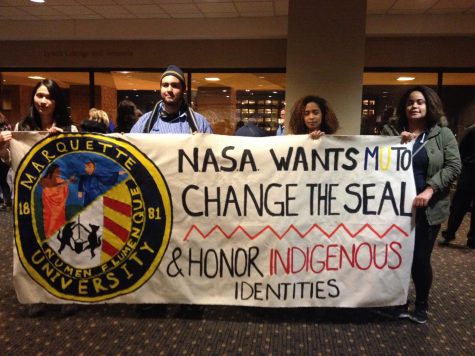
“By cropping the seal to instead shift the focus to the guide on the left and Marquette on the right, Marquette has the opportunity to contribute to ending this narrative and building a better future for its indigenous community,” said Alex Liberato, junior in the College of Business Administration and current president of Native American Student Association, said in an email.
Liberato stated that the current cropping implies that the Native American in the seal is docile to Marquette, as shown by the way he points, and also reinforces the narrative of the “uncivilized Indian.” He also said that this narrative contributes to the long term racism and violence Native Americans have endured.
Liberato also said that the seal itself is just a symbolic issue of the oppression that Native Americans face on campus. Liberato said that bringing more Native American students to campus can be a more tangible effort.
According to Marquette’s Institute and Research Analysis, only 16 undergraduate students who identify as “American Indian” attended Marquette during the 2019 fall semester.
Marquette could provide a support system for Native American students, Liberato said. Liberato detailed how Native American students he’s known to have faced financial instability or suffered academically due to factors in their life that were out of their control.
“Offering more support to indigenous students from an institutional level would make a huge difference for native students here at Marquette,” Liberato said in an email. “More can and should be done to make sure that native students and students of color as a whole have a situation that is conducive to positive academic outcomes.”
Marquette changed the mascot from the Warrior to Golden Eagle in the 90s and recently in November of 2019 changed room 157 in the Alumni Memorial Union to the “Tribal Flag Room” to honor indigenous nations of the great lake region.
“I am more hopeful than I would be otherwise,” Liberato said in an email. “But it still is up to our student body to continue to work for the positive change we want to see on campus.”
According to Senior Director of University Communication, Lynn Griffith, The university is currently in the process of evaluating how to best update the seal. A plan is expected to be put forth this summer.
This story was written by Benjamin Wells. He can be reached at benjamin.wells@marquette.edu

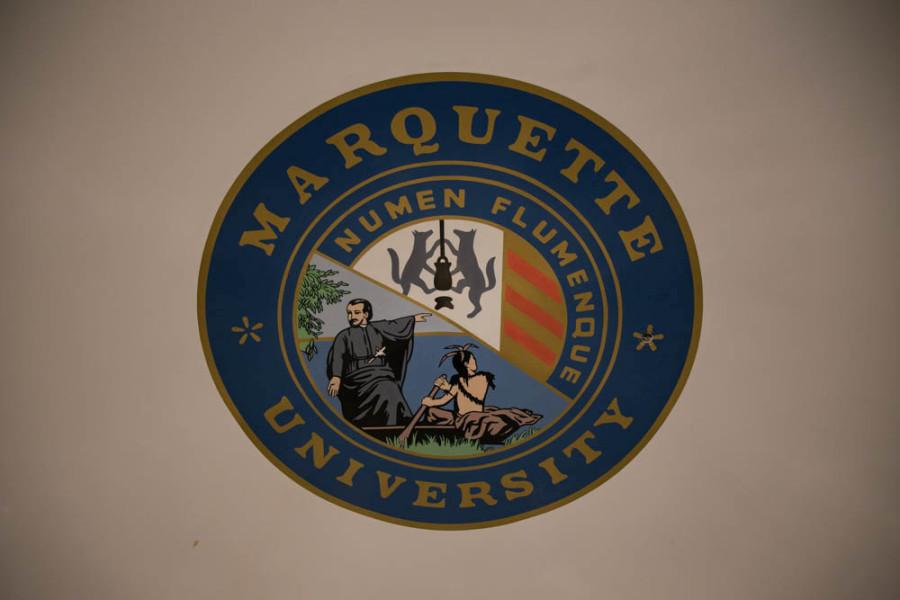


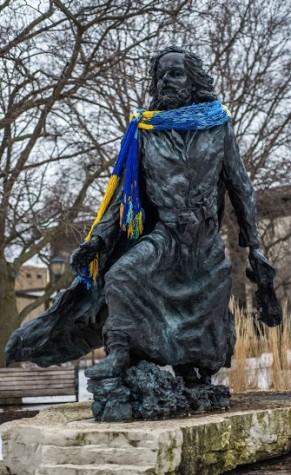

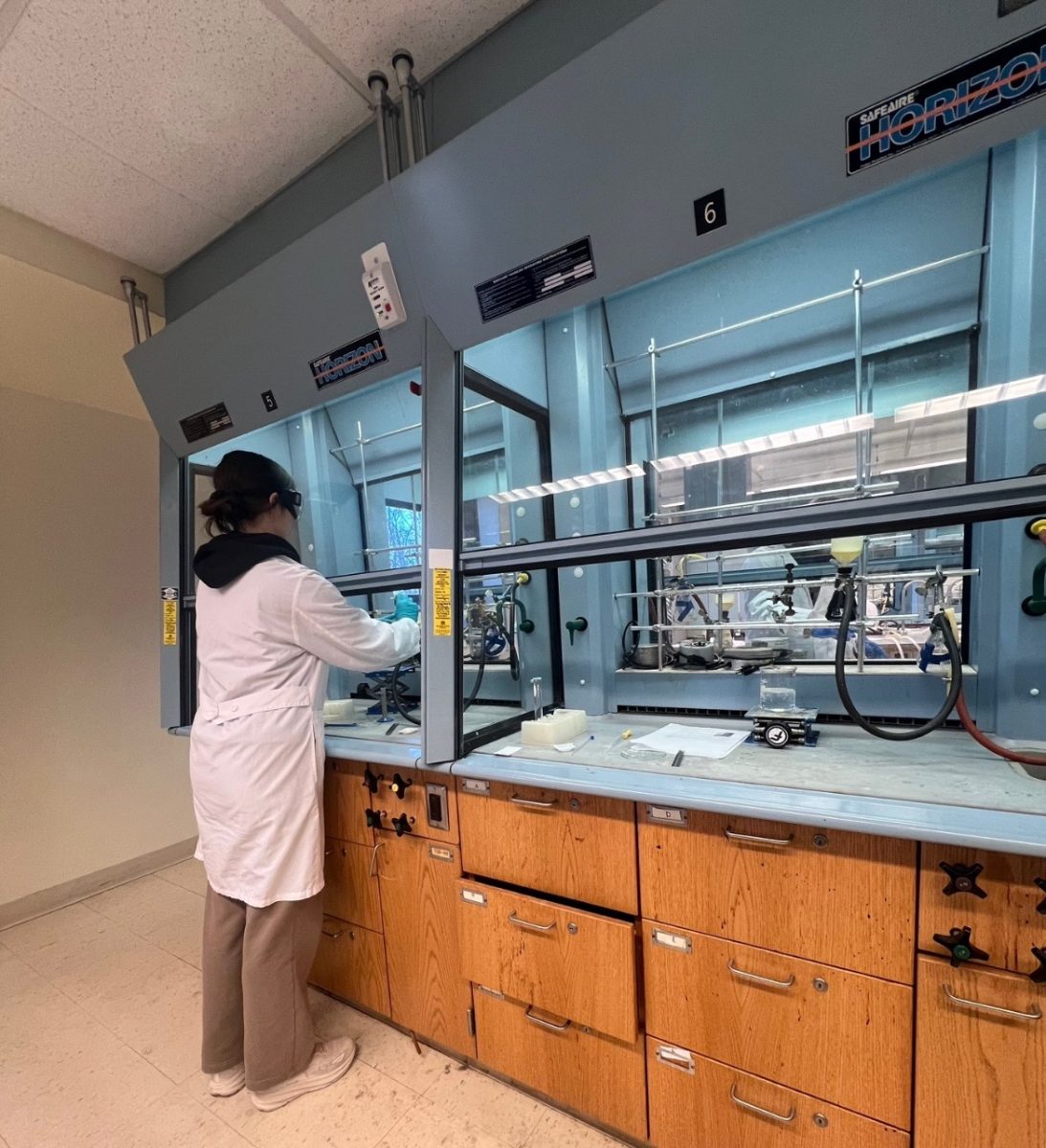

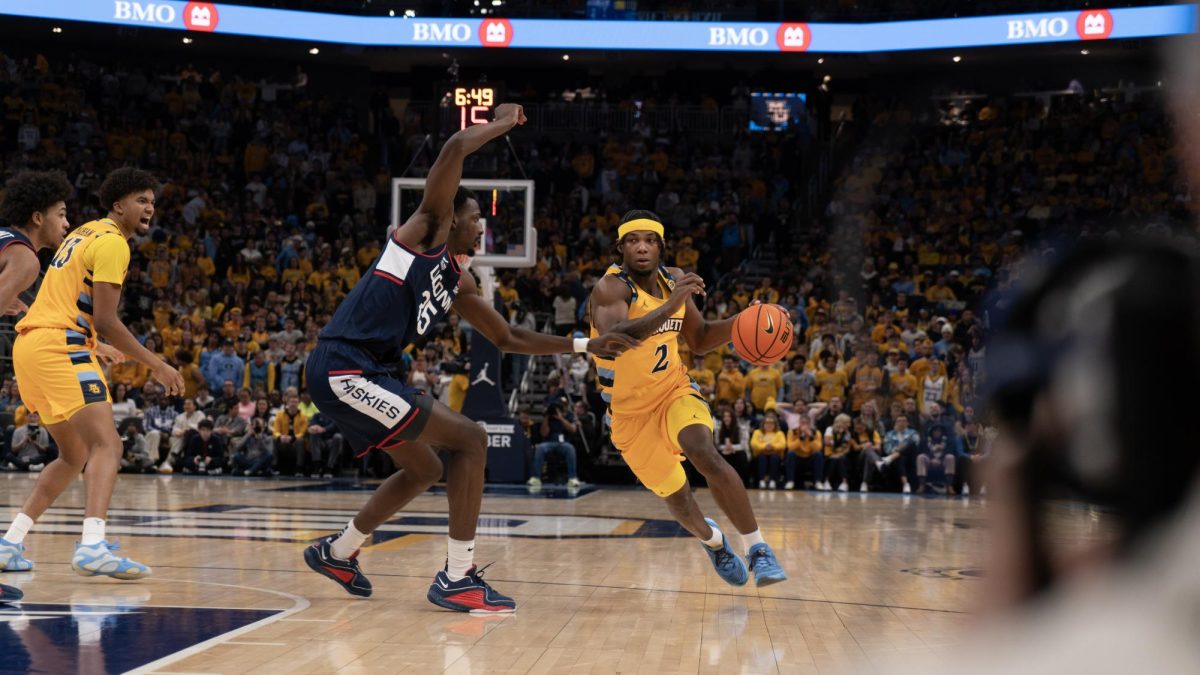
Arthur Heitzer • Oct 20, 2020 at 4:40 pm
I suppose some people also miss Willie Wampum. I do not.
Jim Pere • Jul 13, 2020 at 7:30 pm
Perhaps we should go back to being the Marquette Warriors?